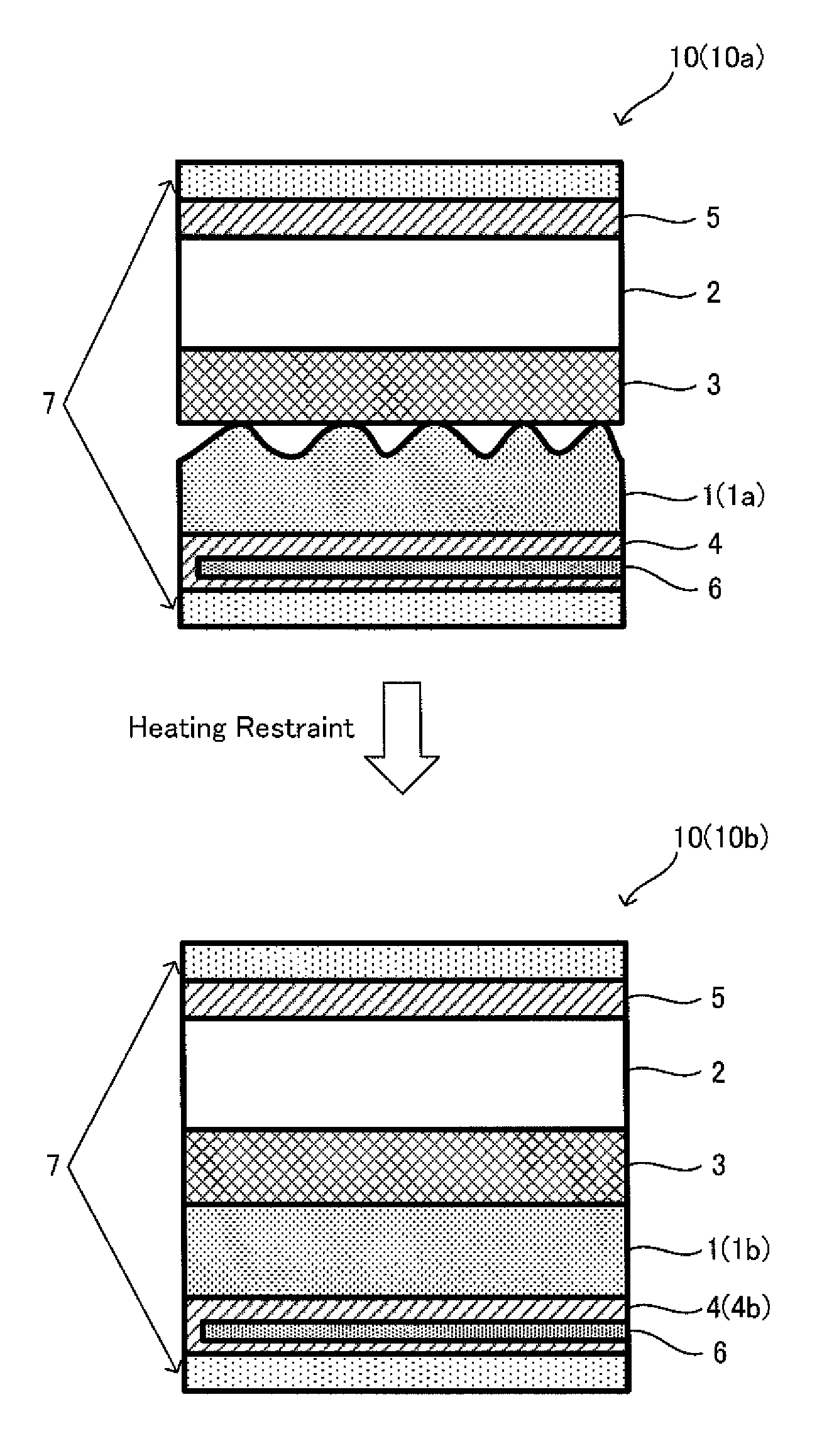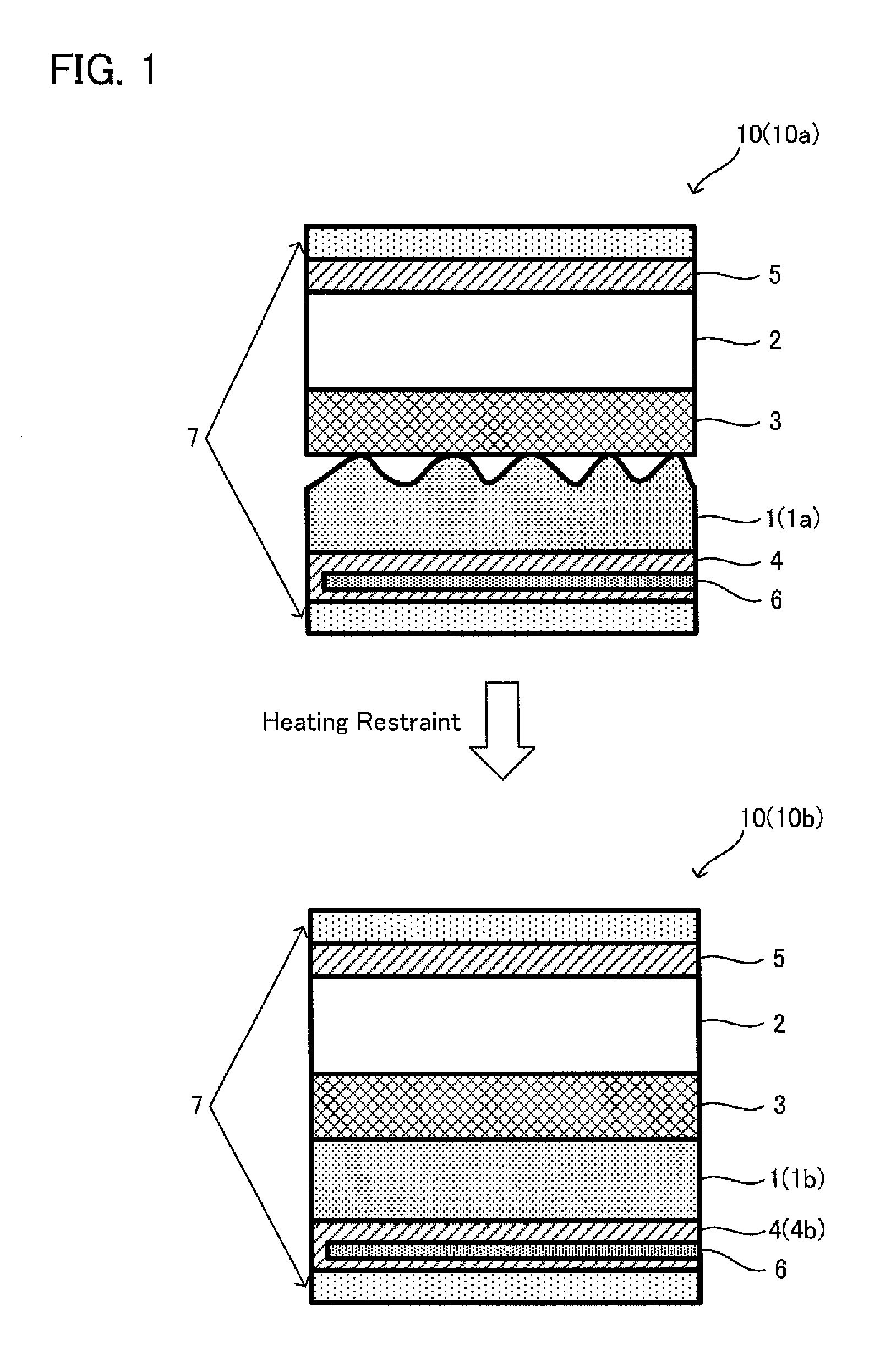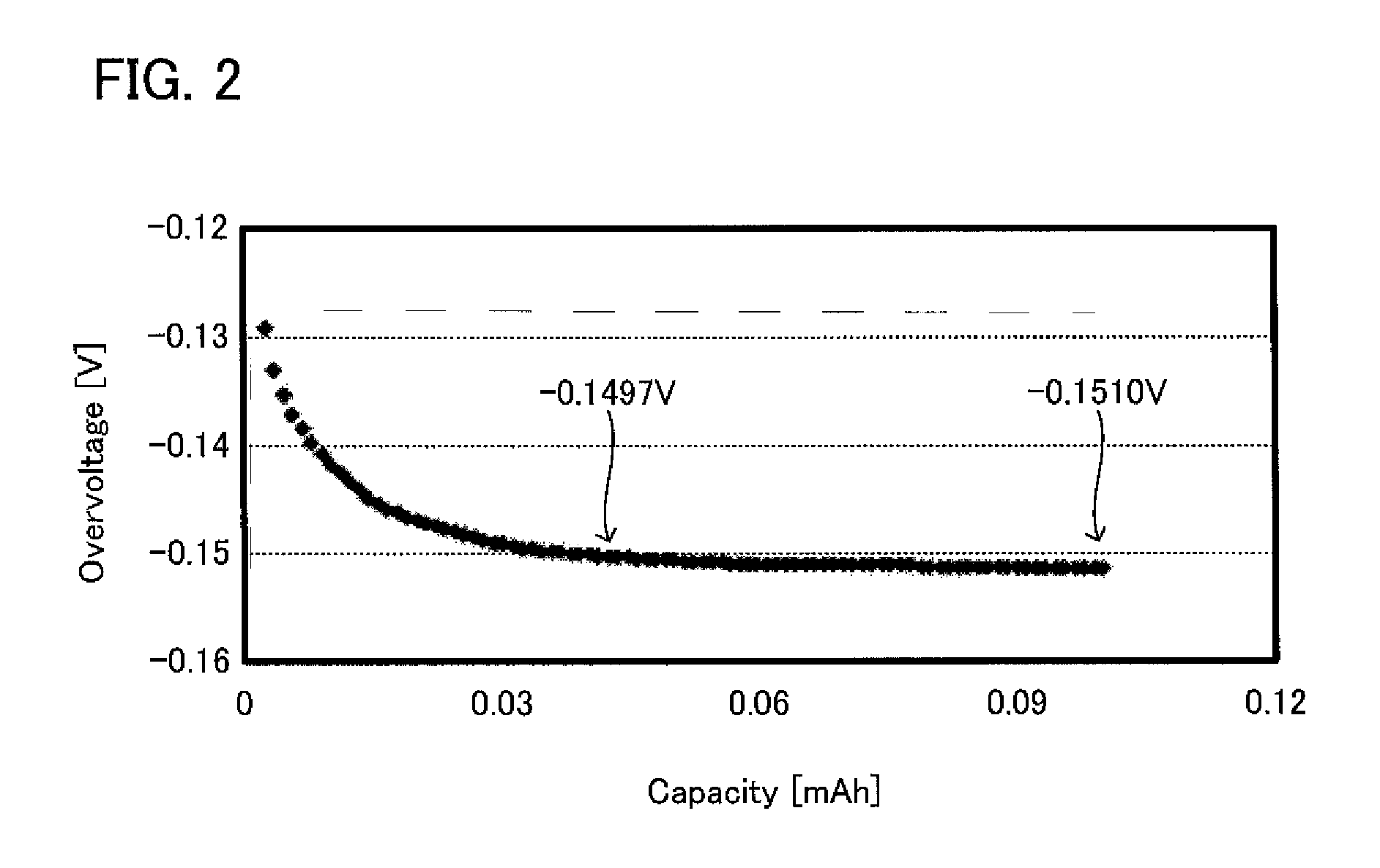Solid battery and method for regenerating the same
a solid battery and regenerative technology, applied in the direction of secondary cell servicing/maintenance, cell components, sustainable manufacturing/processing, etc., can solve the problems of flammability of electrolytic solutions, achieve increased overvoltage, increase contact area, and increase interface resistance
- Summary
- Abstract
- Description
- Claims
- Application Information
AI Technical Summary
Benefits of technology
Problems solved by technology
Method used
Image
Examples
examples
[0052]A solid battery 10 using a lithium foil as an anode 1 was charged for a certain period of time, and thereafter was regenerated by the method of the present invention. A heat generating device which generates heat by being applied with an electric current was used as a heating device 6. An anode 1a was heated to 160° C. by the heating device 6 to be softened. Then, a compressive pressure of 0.005 MPa was applied to the softening anode 1a for 30 seconds by using a fastening device 7, to thereby regenerate a solid battery 10a to a solid battery 10b. The charge curves of the solid battery 10a and the solid battery 10b are shown in FIG. 3. The vertical axis of FIG. 3 represents the overvoltage [V], and the horizontal axis of FIG. 3 represents the capacity [mAh].
[0053]As shown in FIG. 3, the overvoltage in the plateau region of the solid battery 10a before regenerated by the method of the present invention was −0.1510 V. However, the overvoltage in the plateau region of the solid ba...
PUM
| Property | Measurement | Unit |
|---|---|---|
| temperature | aaaaa | aaaaa |
| temperature | aaaaa | aaaaa |
| melting point | aaaaa | aaaaa |
Abstract
Description
Claims
Application Information
 Login to View More
Login to View More - R&D
- Intellectual Property
- Life Sciences
- Materials
- Tech Scout
- Unparalleled Data Quality
- Higher Quality Content
- 60% Fewer Hallucinations
Browse by: Latest US Patents, China's latest patents, Technical Efficacy Thesaurus, Application Domain, Technology Topic, Popular Technical Reports.
© 2025 PatSnap. All rights reserved.Legal|Privacy policy|Modern Slavery Act Transparency Statement|Sitemap|About US| Contact US: help@patsnap.com



